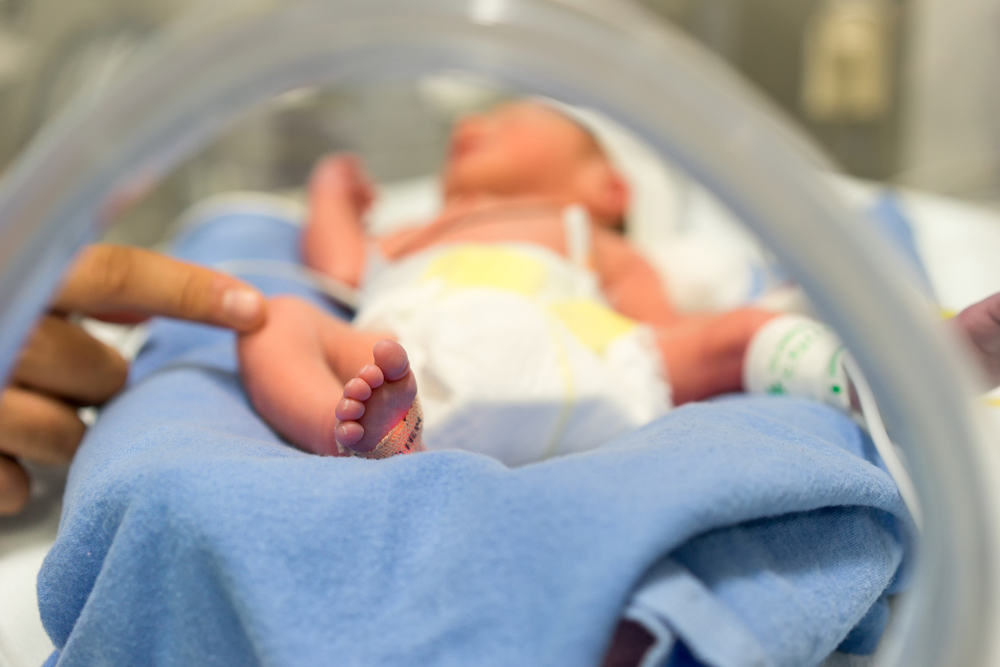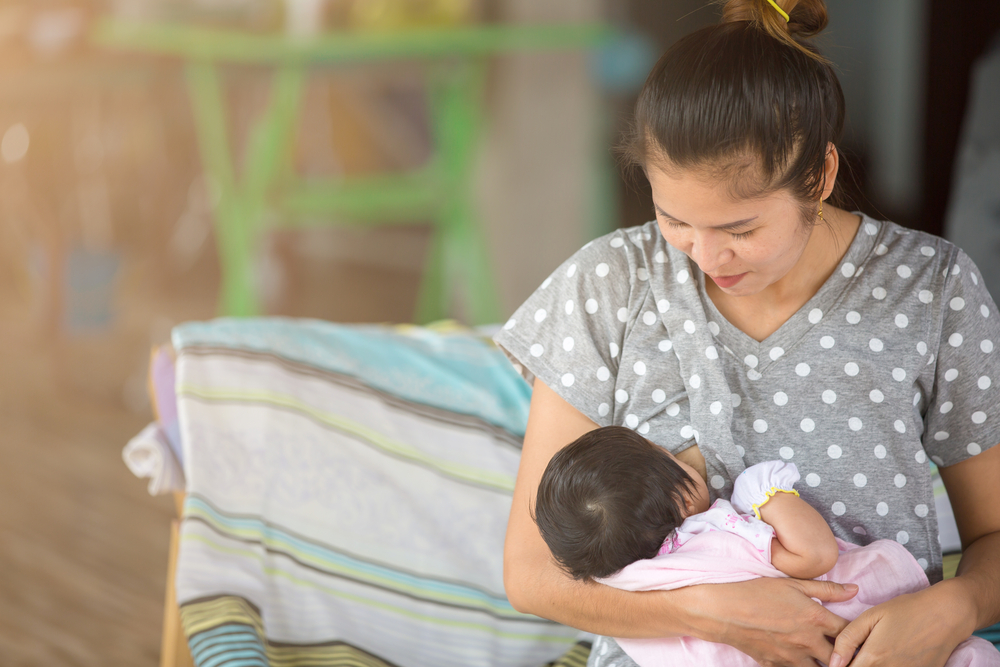Contents:
Medical Video: Doctor's Advice for Preventing Premature Birth
Indonesia ranks fifth in the world with the highest number of premature babies in the world, reaching 675,700 babies in 2010 based on The Global Action Report on Preterm Birth from the UN's Born Too Soon report, reported by Kompas.
Premature babies are not only smaller than babies in general, but they can also have various physical and developmental problems. Premature babies between weeks 23 to 28, in particular, have the highest risk of complications such as cerebral palsy; ADHD; anxiety disorder; and problems of vision, hearing and digestion. They also have a higher risk of infection and are the most at risk for sudden infant death syndrome (SIDS).
Most preterm births are spontaneous: associated with premature labor or premature rupture of membranes. The rest is done on the basis of medical or obstetric complications that endanger the health of the mother or fetus.
What is meant by premature babies?
Premature babies refer to the birth of a baby that occurs before the mother reaches the end of the 37th week of gestation. There are various levels of prematurity and each carries their own risk. Very premature babies, born before week 26, are the most risky and sometimes known as micro premature. A baby is born at 37 weeks or better known as a "term" baby, aka on time. Generally, the earlier the birth, the higher the risk of health.
Premature birth can also be defined by birth weight: low birth weight (less than 2500 grams), very low birth weight (less than 1500 grams), and extreme low birth weight (less than 1000 grams). In addition, the birth of premature babies and low birth weight is associated with heart disease in adulthood.
How much chance do premature babies survive?
Actually, most doctors determine the age of eligibility as around 24 weeks of pregnancy. In many hospitals, 24 weeks is the limit for doctors to use intensive medical interventions to try to save the lives of premature babies.
A baby born at week 24 will usually require many interventions, potentially including mechanical ventilation and other invasive treatments, and is followed by long-term hospitalization in the neonatal intensive care unit (NICU).
In the hands of experienced experts, babies born a little earlier may have a good chance of survival. Babies born at week 23 may survive under the auspices of a specialist in a leading NICU facility, but the chances are much lower. Babies who have survived premature births at weeks 21 and 6 days, reported in the news as a "miracle."
The possibility of survival will increase following continued gestation. Pregnancy is so important in determining the chances of giving birth to a premature baby, that even an additional one week the baby stays in the womb can make a big difference.
"The longer the age of your pregnancy, the risk will be much reduced," said Dr. Jill Hechtman, medical director of Tampa Obstetrics in Tampa, Florida, reported by Fox News. In general, premature babies born closer to week 37 will be better than those born before the 28th week.
What makes you risk having a premature baby?
There are several risk factors for preterm birth, including those that have not been identified by researchers. Some of these risk factors are "modified," which means they can be changed to help reduce risk. Other factors that cannot be changed. Often, the specific cause of premature birth is unclear - two-thirds of preterm births have no biological reasons, according to the findings of the journal published by PLOS ONE.
1. Age during pregnancy
Women under the age of 16 and those over the age of 35 during pregnancy have an increased chance of 2-4 percent of premature births, compared to those in the 21-24 year age range during pregnancy. Several studies have examined the relationship between maternal age and preterm birth, with preterm births - and those in breech positions - occurring in 8% of mothers over 35 years of age compared to less than 4% of births among mothers younger than 35 year. Older pregnant women are more likely to experience bleeding before becoming pregnant. This is largely due to the way the placenta is embedded lower in the uterus
These findings have been linked to hormonal factors associated with increasing maternal age. However, there is not enough solid evidence to determine whether the increase in age is a factor independent and directly from the birth of a premature baby.
Women who are underage (teenage pregnancy) also carry an increased risk of poor pregnancy outcomes, including the risk of undergoing early labor compared to groups of women aged 20-39 years. Adolescents are also more likely to have an increased risk of higher births of premature babies.
2. Distance between pregnancies
The period between two pregnancies that are only six to nine months between the birth of one baby and the beginning of the next pregnancy is known to increase the risk of preterm birth. In fact, more than half of women reported pregnancy after 12 months of giving birth to their first baby, giving birth to the next baby before 39 weeks, according to a study in BJOG: An International Journal of Obstetrics and Gynecology.
Experts say the optimal time between pregnancies is 18 months but it is unclear the reason behind this, and that further research is still needed.
"But figures tell us that for every month closer to 18 months between two pregnancies, there is a higher chance that you will have a healthy pregnancy," said Dr. Scott D. Berns, president and CEO of the National Institute for Children's Health Quality (NICHQ) in Boston, Massachusetts.
3. History of premature birth
The risk of preterm birth is increased in women who have a previous preterm delivery. In fact, studies show women who give birth prematurely are at a 30-50 percent higher chance of having a premature baby in their next pregnancy.
A history of preterm delivery is the strongest risk factor for recurrent premature births and recurrence often occurs at the same age, with around 70 percent of early deliveries occurring within two weeks of gestation from the first preterm birth.
Birth of an iatrogenic premature baby (caused by doctor's care of a disease or a patient's condition) accounts for more than 30 percent of all preterm births. The preterm birth rate continues to increase in many countries around the world because of the increase in the rate of preterm births shown.
4. Twin pregnancy
It is estimated that 50 percent of twin twins end in preterm birth and almost all of the multiple multiples that are higher (90 percent) are born prematurely. As many as 36 percent of triplets were born before 32 weeks of pregnancy, according to a study conducted by Ifeoma Offiah and a team of researchers from the University of Cork Maternity Hospital, Ireland.
Premature birth is the most common complication for pregnant women with twins or subsequent multiples, followed by low birth weight, neonatal and perinatal, neonatal, and infant mortality morbidity.
Pregnancy twins and so on only occupy 2-3 percent of all pregnancies, but include more than 17 percent of late preterm births, and 23 percent of extreme preterm births. The mean age of birth for most multiple pregnancies occurs in peridoe preterm births (34-36 weeks gestational age) due to the onset of spontaneous labor and iatrogenic preterm birth.
5. Mother's infection
Associated infections and inflammation are important initiators of the pathway for preterm birth. Infection that affects the vagina, kidneys, bladder and urinary tract can increase your risk of giving birth to a premature baby. Similarly, general infections are accompanied by high fever (more than 38ºC) in pregnant women.
Infection such as bacterial vaginosis or caused by certain bacteria, such as mycoplasme and Ureaplasma can increase your risk. Research shows that intrauterine infection (infection in the uterus) may be responsible for approximately 40 percent of preterm births, and is also a risk factor for stillbirths. This is indicated by the discovery of repeated positive bacterial cultures of the placenta or membrane from the high proportion of patients who experience preterm birth. In addition, group B streptococcus (group B strep) is also a risk factor for preterm birth, although it is classified as rarer - so that even if you prove positive, it does not mean you will experience premature birth.
25 percent of cases of premature babies occur in mothers who have bacterial colonization of the uterus. There are some indications that this is more due to the relative number of bacteria, or certain species of bacteria, not just their presence, which affects premature birth.
6. Chronic conditions suffered by the mother
Pregnant women who have diabetes, hypertension, anemia, asthma, inflammation of the large intestine (IBS), kidney disease, lupus, thyroid disorders, pre-eclampsia, or antiphospholipid syndrome / APS (autoimmune disorders in which the body's antibodies invade and damage tissue or healthy body cells) for example, have an increased risk of premature baby birth.
Infectious sex is also known as a factor that plays a big role in determining the safety of your pregnancy. Pregnant women who have thrachomatic chlamydia are more likely to have a short cervix than the control group (33 percent versus 17.9 percent). C. trachomatis infection that occurs in the 24th week of pregnancy brings an increased risk of preterm births that tend to be 2-3 times higher than those infected with the same disease at gestational age less than 37 weeks and less than 35 weeks.
7. Cervical abnormalities
Incompensation of the cervix is dilation and removal of the cervix before labor, which contributes to the loss of a healthy pregnancy. This includes infrequent, only covering 1-2 percent of total pregnancy cases in the US, but is responsible for 25 percent of the total miscarriage cases in the middle of the third trimester. Factors at risk for cervical incompetence include a history of cervical surgery, and a history of miscarriage or abortion in the second trimester.
The risk of preterm birth increases significantly in women who have a short cervix after undergoing uterine surgery, especially a cone biopsy or a loop electrosurgical excision procedure (LEEP) - which tests pre-cancerous cells or abnormal cells.
8. Pregnant body weight that does not meet standards
Although nearly half of women gain too much weight during pregnancy, 21 percent don't get the recommended amount, according to a study in the journal Obstetrics and Gynecology. Evidence shows that low pre-pregnancy weight is associated with an increased risk of preterm birth. Their findings included a significant association between maternal BMI of less than 23 and an increased risk for preterm birth. This evidence is then supported by various other studies, the most prominent of which come from the Preterm Prediction Study, where it was reported that maternal BMI of less than 19.8 was strongly associated with an increased risk of extreme preterm birth at less than 32 weeks' gestation, with relative risk 2 , 5 percent.
Obese pregnant women are also at an increased risk of certain complications during pregnancy, labor and birth, and the post-partum period. Risks include an increased risk of infant malformations, including neural tube defects (spina bifida), shoulder dystocia, and other birth trauma, including endometritis and infection with caesarean section injuries, compared with non-obese women.
Pre-pregnancy obesity has a role in risk factors for preterm birth by increasing the risk of premature rupture of membranes (PPROM). The risk of spontaneous preterm birth in obese women at less than 37 weeks of gestation, without PPROM reduced: 6.2% compared to 11.2% in non-obese mothers.
9. Physical stress
Pollution. Sixteen thousand premature births have been linked to air pollution in the US, according to a study by NYU Langone Medical Center. The most affected areas are city districts.
Test-tube baby. Now more women than ever have switched to IVF (in-vitro fertilization) programs to try to get pregnant. In 2014, 375 member clinics for the Society for Assisted Reproductive Technology (SART) were carried out 190,384 IVF cycles and related procedures which resulted in 65,175 babies being delivered. Although it's not clear why, women who become pregnant through IVF appear to have an increased risk for preterm birth.
Physical fatigue at work. With the increasing number of mothers continuing to work until their late pregnancy, work stress is hypothesized to be an important contributor to adverse reproductive outcomes, both for mothers and infants. Physical stress such as shift work, long standing time, and lifting heavy loads have been consistently associated with an increased risk of preterm birth. His theory, having and being able to keep a job, is his own indicator of higher socioeconomic status, which has an inverse effect on the rate of preterm birth. Recent studies have found an association of increasing rates of preterm birth and employment, but this study is mostly carried out in developed countries, where physical fatigue and hazardous working conditions are not the norm of society.
10. Lifestyle (alcohol, cigarettes, and substance abuse)
Alcohol. Alcohol can harm the development of the fetus in the womb. You should not drink at all in the first trimester, and ideally not at all until after giving birth. If you choose to drink, limit yourself to one or two units of alcohol once or twice a week, maximum.
Smoke. Smoking during pregnancy increases the risk of preterm birth by twofold and is associated with early rupture of membranes and intrauterine growth restriction (IUGR) -— the condition of fetal size is smaller than expected for the number of months of pregnancy. The more cigarettes you smoke, the higher your risk of harming the fetus. All you can do to reduce your risk is to stop now.
Drugs. If you use cocaine or heroin while pregnant, you will be more likely to have a premature baby.
Physical activity. Lack of physical activity or being involved in dangerous lifestyle habits (using alcohol, cigarettes, or drugs, or all of them, followed by a lack of physical activity) also increases your risk of giving birth to a premature baby.
11. Maternal mental health (depression and trauma)
Traumatic events. Exposure to traumatic life events has been linked to chronic and extreme preterm births. Exposures are defined as death or serious illness experienced by close relatives, 6 months before conception or in the first or second trimester of pregnancy, or experience domestic violence or sexual violence while you are pregnant. The lack of support from surrounding people and even qualified health facilities can also trigger the birth of premature babies.
Depression. Pregnant women who have (diagnosed or not) new depression or relapsing depression have a 30-40 percent increased risk of having a premature birth that occurs in the 32-36 m gestation period, while father depression is associated with a 38 percent increased risk of premature infant mortality. in the 22-31 gestational period, according to a BJOG study: An International Journal of Obstetrics and Gynecology.
Research on psychosocial factors and preterm births in recent years has accumulated rapidly. However, the mechanisms involved in the psychosocial association of premature births are not well understood.
READ ALSO:
- The Importance of Giving Breast Milk to Premature Babies
- Causes of Babies Born Still Dead (Stillbirth)
- The Importance of Normal Weight in Newborns












